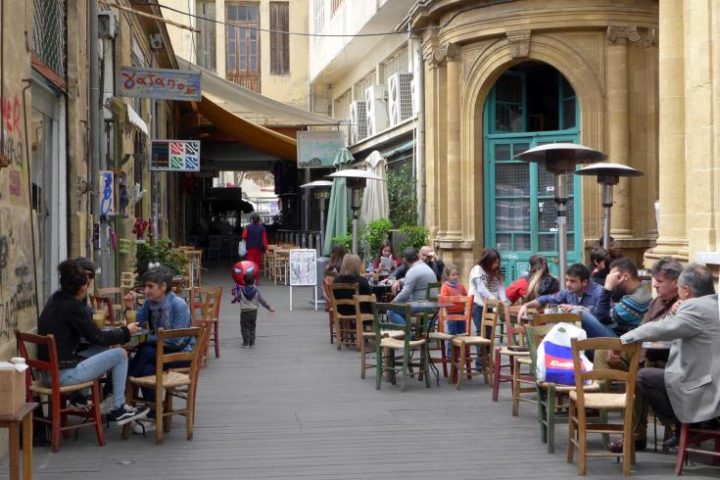The European Commission is leading member states' coordination efforts to exchange information on surveillance, case definition and measures taken by EU countries to respond to this novel flu virus. The Commission said in an announcement that “the situation is changing rapidly and the European Centre for Disease Prevention and Control is monitoring the situations on a continuous basis.”
The Commission holds daily audio meetings with the EU's Health Security Committee and national contact points of the Early Warning Rapid Alert System (EWRS) with the aim of adopting a common guidance document on managing the novel flu virus. This will include information on the case definition, advice to travellers and management of cases. Earlier this week health Commissioner, Androulla Vassiliou called for an extraordinary meeting of health ministers in Luxembourg Thursday. The meeting will discuss further common approaches to tackling the novel flu virus including countermeasures such as anti-virals and vaccines.
"We have learned valuable lessons from past experiences with SARS and avian influenza. Not only are surveillance systems more robust today but we have also developed stronger collaboration mechanisms both at EU level and with our partners around the world,” said Health Commissioner Vassiliou said.
“I am convinced that we are in a better position today to protect the health of EU citizens from health threats such as this novel flu virus," she added.
The Commission raised its level of alert to ' red' on April 27 by launching its Health Emergency Operating Facility (HEOF). WHO declared level 5 on Wednesday. Daily information exchange with the MS contact points continues and outcomes of the meetings are available on the SANCO website. In addition, there are regular audio meetings with the members of the Global Health Security Initiative (G7 countries, Mexico, WHO and European Commission). Commissioner Vassiliou briefed EU foreign ministers on April 26 and will discuss a common EU approach at the extraordinary health council Thursday. She also met with the pharmaceutical and vaccine industry in order to be briefed on the current state of play regarding antiviral and vaccines.
Commissioner Vassiliou met on Wednesday with pharmaceutical industry representatives, in particular with the European Vaccine Manufacturers, to address key questions on vaccines and antivirals against the novel flu virus. The European Commission will continue to work with the industry, which is committed to contributing to the efforts in the face of novel flu virus.
The situation is evolving quickly with 19 confirmed cases in the EU (10 in Spain, 5 in UK and 3 in Germany and 1 in Austria) as of 08h00 on April 30. All EU confirmed cases have a history travel to Mexico, except for one case in Spain where there is evidence of transmission within the household. The European Centre for Disease Prevention and Control (ECDC) is continuously monitoring the situation and providing daily epidemiological updates on its website.
The novel influenza virus (human swine influenza A(H1N1) has been found to contain genes from pig, bird and human influenza viruses, in a combination that has never been observed before anywhere in the world
People become infected with novel influenza virus A(H1N1) in the same way as with the normal seasonal influenza. It spreads from person to person via droplets from an infected person who is coughing and sneezing. Symptoms of novel influenza A(H1N1) in humans are usually similar to regular human seasonal influenza symptoms, involving fever of sudden onset and respiratory symptoms; diarrhoea might also occur. Severe complications can occur even in normally healthy persons who become infected with the virus. The virus is sensitive to some of the available antiviral drugs.
The Health Emergency Operations Facility (HEOF) is a part of the Commission's public health emergency management structure, coordinated by the Senior Management Team. The main objective is to provide the Commission and member states with an overview of the situation and to ensure effective coordination between the Commission, member states, other associated countries (candidate countries, EEA countries), agencies such as the ECDC, European Food Safety Agency (EFSA) and European Agency for the Evaluation of Medicinal Products (EMEA), and international organisations (such as the WHO) during an emergency situation.
What Are Cookies
As is common practice with almost all professional websites, our site uses cookies, which are tiny files that are downloaded to your device, to improve your experience.
This document describes what information they gather, how we use it and why we sometimes need to store these cookies. We will also share how you can prevent these cookies from being stored however this may downgrade or ‘break’ certain elements of the sites functionality.
How We Use Cookies
We use cookies for a variety of reasons detailed below. Unfortunately, in most cases there are no industry standard options for disabling cookies without completely disabling the functionality and features they add to the site. It is recommended that you leave on all cookies if you are not sure whether you need them or not, in case they are used to provide a service that you use.
The types of cookies used on this website can be classified into one of three categories:
- Strictly Necessary Cookies. These are essential in order to enable you to use certain features of the website, such as submitting forms on the website.
- Functionality Cookies.These are used to allow the website to remember choices you make (such as your language) and provide enhanced features to improve your web experience.
- Analytical / Navigation Cookies. These cookies enable the site to function correctly and are used to gather information about how visitors use the site. This information is used to compile reports and help us to improve the site. Cookies gather information in anonymous form, including the number of visitors to the site, where visitors came from and the pages they viewed.
Disabling Cookies
You can prevent the setting of cookies by adjusting the settings on your browser (see your browser’s “Help” option on how to do this). Be aware that disabling cookies may affect the functionality of this and many other websites that you visit. Therefore, it is recommended that you do not disable cookies.
Third Party Cookies
In some special cases we also use cookies provided by trusted third parties. Our site uses [Google Analytics] which is one of the most widespread and trusted analytics solutions on the web for helping us to understand how you use the site and ways that we can improve your experience. These cookies may track things such as how long you spend on the site and the pages that you visit so that we can continue to produce engaging content. For more information on Google Analytics cookies, see the official Google Analytics page.
Google Analytics
Google Analytics is Google’s analytics tool that helps our website to understand how visitors engage with their properties. It may use a set of cookies to collect information and report website usage statistics without personally identifying individual visitors to Google. The main cookie used by Google Analytics is the ‘__ga’ cookie.
In addition to reporting website usage statistics, Google Analytics can also be used, together with some of the advertising cookies, to help show more relevant ads on Google properties (like Google Search) and across the web and to measure interactions with the ads Google shows.
Learn more about Analytics cookies and privacy information.
Use of IP Addresses. An IP address is a numeric code that identifies your device on the Internet. We might use your IP address and browser type to help analyze usage patterns and diagnose problems on this website and to improve the service we offer to you. But without additional information your IP address does not identify you as an individual.
Your Choice. When you accessed this website, our cookies were sent to your web browser and stored on your device. By using our website, you agree to the use of cookies and similar technologies.
More Information
Hopefully the above information has clarified things for you. As it was previously mentioned, if you are not sure whether you want to allow the cookies or not, it is usually safer to leave cookies enabled in case it interacts with one of the features you use on our site. However, if you are still looking for more information, then feel free to contact us via email at [email protected]







